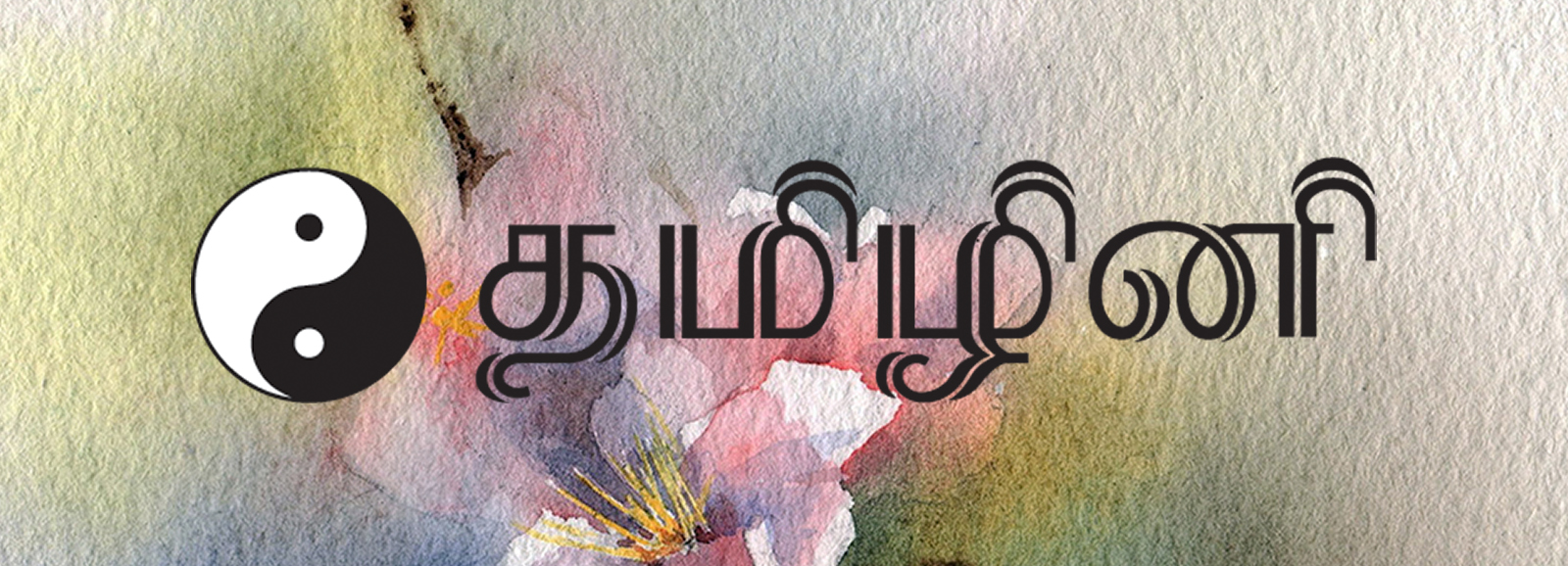Montaigne was a voracious and efficient reader. He took notes of whatever he had read. He collected them and classified them – anecdotes, ideas, strange facts and whatever was new and would startle the reader. He used all the knowledge he had garnered from his studies. “Read to use” was the famous dictum of Francis Bacon’s essay on “Study”. Perhaps, Bacon distilled his wisdom from his reading of Montaigne’s Essays. Either he kept a journal from his younger days or had a remarkable memory to store such an abundant wealth of facts and ideas. We don’t have the knowledge about Montaigne keeping a journal. But we can infer the habit from his nineteenth century American disciple, Ralph Waldo Emerson, who kept a journal from the age of sixteen to the last. He classified the ideas he had collected from his readings and the insights that appeared as lightnings in his own inner firmament and arranged them into separate essays and published them as separate books of essays. Like Montaigne’s stylistic prose, Emerson’s prose was praised as the best prose of the nineteenth century by the English poet and critic, Matthew Arnold.
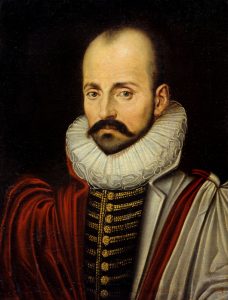
A Brief Life Sketch:
Montaigne hailed from a wealthy and noble family. The idea of education that his father entertained was to make his son a scholar and a magistrate. So, he hired a tutor for his son who would talk to him and teach him only in Latin, the official language of Europe. After he attained fluency in Latin, he was taught French, his mother tongue. This initial mastery over Latin gave him one upmanship and supreme self-confidence.
The next formative influence was his first job. He was to assist a magistrate by writing arguments of both the sides in a case on behalf of him. This job gave him two good habits: the habit of regular writing and the habit of thinking on both the sides of an issue. That is the reason we find many instances of self-contradiction in his Essays, and it also provided him his philosophical stance of skepticism.
The next great influence on him was his soulful friendship with La Boétie. He was a true representative of renaissance, a radical who defied and negated all authority and stood for liberty of the individuals. He died at an early age and entered into the soul of his friend and completed his lifetime ambition through his soulful companion. Some biographers consider the relationship between the two could have been homosexual. Not necessarily. Deep friendship could be a form of platonic love. The universal sage Thiruvalluvar, who devoted five chapters to friendship clears away this doubt in a couplet:
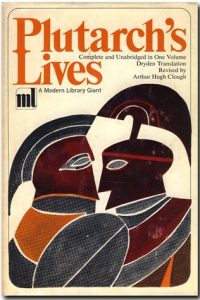
“Physical contact is not necessary. Feeling alone could provide the boon and bliss of friendship”. (புணர்ச்சி பழகுதல் வேண்டா உணர்ச்சிதான் நட்பாங் கிழமை தரும் – குறள் 785) Montaigne was an example of such friendship. The major literary influence on him was his reading of Plutarch’s “Parallel Lives” and “Moralia” and Seneca’s “Moral Letters”. He borrowed his ‘historical method’ of thinking and writing from Plutarch’s Moral Essays and his clear and lucid style from Seneca. But his own modification was with ease and obtained a conversational style of letter writing with a personal pronoun I and addressing a close friend, whereas, Seneca’s style was terse, condensed and to the point. Montaigne’s was meandering, digressive and gossiping. Though a faulty one, that was his correct understanding of psychology of the massed and he catered to their needs. Hence his popularity with both the elite and laymen prevails.
‘Conspicuous by absence’ would be the apt description of his attitude towards Christ. In his voluminous book of about 1500 pages, he has never mentioned the name of Christ except once. His attitude was not atheistic, but anti-religious particularly anti-Christ. He started composing his book at the age of 37 and kept on writing it for the next 20 years until it grew to the size of the Bible. Instead of faith, he offered self-knowledge as a way of salvation as Buddha and Socrates had already shown. He wanted to produce a secular Bible. And one could say that he has almost succeeded in his attempt.
His play acting as a true Christian on the world scene was very convincing. He paid a visit to the Pope and kissed his shoe, attended masses, disagreed with Calvinists openly and even at the time of his death, he confessed to a Catholic priest and accepted all the rituals. At last, he died peacefully at the age of 59.
His attitude in his later life was a mixture of Stoicism, Skepticism, Fideism and Epicureanism. He took the best portions of all these four systems of philosophy and made a blend of them. But he is mainly known for his Skepticism. For it was very much in the air at that time. One of the major and immediate influences on his mind was the ancient skeptic Sextus Empiricus. The French translations of his complete works had been published in 1560, when Montaigne was just 28.
Tranquility of mind through suspension of judgement was the aim and end of the life. It was for him, the way of salvation. Throughout his book, we could see him testing himself against all the vicissitudes of life, good and bad, happy and hurtful. He almost succeeded in all except two. (i) His intolerable and excruciating pain caused by his kidney stones (Philosopher’s Stones) (ii) Death. He was always preoccupied with death. But he didn’t know how to deal with it. As for pain and death, his remedy of self-awareness or self-restraint or control by will did not succeed.
Though while being crucified, he cried in pain, as for death, Christ showed a way out – the resurrection of the body or awakening from death. But the church denied this possibility for all. Being the only begotten son of God, Christ could have a resurrected body but not all of us. I do not believe that Christ would have said it. He was too compassionate a man to do it. And it is unfair, when death is for all beings, resurrection must also be for all. What was the Science behind resurrection? Neither the churchmen nor the Scientists have asked this relevant question. It is high time for them to do that.

Ray Kurzweil
The Siddhas and Alchemists of the world had asked this question and provided a positive answer. Only in the last two decades. Gerontologists like Ray Kurzweil and Aubrey de Grey have come forward with a new branch of science called Longevity Medicine. By 2045, Science will have solved the problems of disease, old age and death, they claim. Some 150 years ago, Ramalinga Vallalar gave us a complete science of immortality and eternity in all details, with all the steps such as right type of food, air, knowledge needed for us. Since the Tamil Siddha tradition have always remained a hidden tradition, it did not reach the western world. It is slowly rising up and seeing the light of the day now. It is a bright sign for the future evolution of homo-sapiens.
Being the originator of the form of the essay, Montaigne remains unrivaled to this day. Of all the definitions of ‘essay’, the one that was given by Samuel Johnson was apt and correct. It shows the genius of the English essayist who ran a magazine with the name ‘The Rambler’, in understanding and expression, just like his French counterpart. “A loose sally of the mind” was his famous definition.
Montaigne was a wise man. As bacon said, ‘History maketh a man wise”. Montaigne learnt his lesson from recent history. He learnt from Martin Luther who initiated the reformation movement from inside the church. He started the Protestant movement against the Pope and the church. He defied and denounced the Catholic church openly. But the church hesitated to touch him because he has the support of many Kings in Germany. Christianity was divided by nationalism.
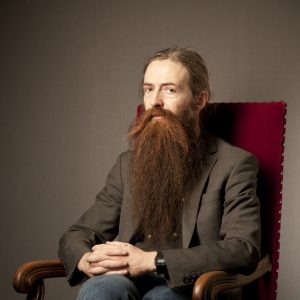
Aubrey de Grey
When Montaigne visited the Pope and paid his homage, his bags were searched. Pope’s aides discovered a copy of his “Essays” and they found many pages damaging to and criticizing the dogmas of Christian church. They pointed out this error. Montaigne promised to remove those passages in the next edition. But he never kept up his promise. The church did not dare to harm him because Montaigne was a friend and confidante of two kings, one was Catholic and the other was Protestant. He was wised and prudent enough to have earned the royal friendship. The king of France visited his house with his forty servants. He slept in the bed of the philosopher. He was allowed to go freely into the bed chamber of the king. This friendship and support from high places kept him safe from the wrath of religious men.
He became a magistrate and was elected twice as the mayor of his city, Bordeaux. Like many of the western philosophers, he was a success in both politics and literature. He had learnt this lesson from the lives of his mentors, Plutarch and Seneca.
Near Death Experience and Change in Life:
How does one acquire and adopt a point of view about life? Either by peer examples, custom and tradition or by some major events in one’s own life such as ‘meetings with remarkable men’ as in Gurdjieff’s life or in Goethe’s student life with his chance of meeting with Herder or in William Hazlitt’s life with his meeting with the poet Samuel Coleridge or with unforeseen accidents such as the events that made Napoleon the emperor of France and then of Europe or with a mystical experience as in the cases of Socrates, Hegel and Swedenborg and Jakob Böhme or near-death experiences of Blaise Pascal and Montaigne.
Life could give birth to ideas and ideas could change one’s life. For both are interlinked with each other. Events in life could change one’s ideas, about one’s life, self, the world and God. Likewise, ideas that are deep, esoteric and timely could change one’s course of life and its intensity. Now, we are going to deal with the accident or a near death experience that happened in the French skeptic’s life. That was the reason why he was always preoccupied with death and also for writing the Essays.
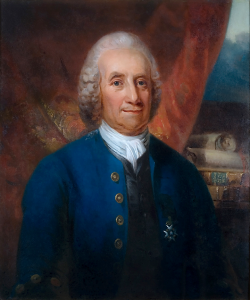
Swedenborg
Once he met with an accident. He was thrown away from his horse. He fell down on the ground and lost his consciousness. He was unconscious for a day and very slowly recovered his consciousness. He had tasted death and seen the darkness of his unconsciousness. When he recovered very slowly, he was able to be aware of the slow rise and down of the light of his own consciousness. He came to understand the difference between life and death – consciousness. And the right question arose in his mind: What is consciousness? How is it born in man? How does it develop? In how many ways it changes? What are its modifications? Can one be aware of all its facets? Can one consciously and willfully change it and keep it steady? What is this ‘I’? Is there such an entity inside one’s mind or is it only a bundle of stray thoughts arising as reactions to the external circumstances? Who am I?
Let us hear his experiences of his self in his own words: “For many years now, my thoughts have dwelt only on myself. Others look out and across; I turn my gaze within. I am always meditating on myself, trying and considering. I am forever revolving in myself. If I study something else, it is merely to apply it to, or rather in myself. My trade and art is to live my life. It is not my deeds I write – it is I and my essence”.
He considered Socrates as his role model and wanted to know himself as his mentor did. But he explored the process of self-awareness and self-knowledge and furthered it like no other philosopher before him in the west. His entire life was a long and continuous watching and recording his own reactions of his body-mind complex to external stimuli like books, men, his pet dog, women, religion, issues and branches of knowledge like law and God. See how he defines God: “Because Socrates alone chewed to the core of that precept of his god, ‘Know thyself’.” He alone has been found worthy of the title of a sage. Montaigne wanted to become a sage in his life like Socrates. And he became one. Whoever reads, digests and assimilates his secular Bible will certainly become a sage.
Only humans are endowed with the capacity to look within. With man, evolution has turned its direction inside on one’s own consciousness. Both Socrates and Montaigne emphasized this unique gift of humanity and introduced the concept of self-knowledge by the method of self-awareness in western philosophy. Later, Descartes in his famous statement in all philosophy of the west, its mahavakya, ‘cogito, ergo sum’ meaning ‘I think, (am aware of my own self) therefore I exist’. This is the only certain knowledge possible for man, he declared to the world. He pushed faith and god to the second level of truth attainable only through this first certainty. For, we find atheists among philosophers, but none can refute one’s own feeling or awareness of one’s own existence.

René Descartes
Some two centuries before Socrates, Buddha had discovered this ‘cogito’ and called it ‘mindfulness’ and developed it in all of its stages, including his famous technique called ‘Vipassana’. Dr. Radhakrishnan writes in his ‘Eastern Religions and Western thought’ that an Indian yogi contacted Socrates and taught him this atma-vidya or self-inquiry. In the twentieth century, a number of new age gurus like Gurdjieff, Ouspenksy, J. Krishnamurti arose to teach this ancient method of self-knowledge. They called it by various names such as ‘self-remembering’ by Gurdjieff, ‘self-awareness’ by J. Krishnamurti and Zen.
The point is, this accident and near death experience of Montaigne was the turning point or the tipping point in his life. It gave him his philosophy of skepticism combined with limited epicurianism and his aspiration to become a sage by writing down his method of introspection applied to everyone of his thoughts, behavior and acts. On the contrary, one such accident in Blaise Pascal’s life turned him into a devout Christian apologist and made him to write his own remarkable books such as ‘The Pensées’ and ‘Provincial Letters’. Both were original works in style and content. One critic writes that Pascal wrote his devotional works only to throw away Montaigne from his mind and prove his adherence to Christian faith.
The accident and near-death experience that happened to Pascal took place like this. One night he was traveling in his coach on the bank of the river Seine in Paris. Suddenly the cart’s axle broke down and the coach rushed towards the river. Finally, it broke the wall on the bank and started gliding into the dark waters. Pascal records that he was gripped with the fear of death. He says his prayers were answered by God. The coach stopped midway and was hanging loose in between the road and the river. This condition kept on for sometime. Finally, help came and he was saved. Pascal claims that only god’s grace and his total surrender to him saved his life from death.
A fatal accident or a near-death experience gives man a chance to experience life existentially with utmost intensity, a soul-experience. Pascal became one of the pioneers of the existentialism, long before the Danish Christian existentialist philosopher, Soren Kierkegaard, who started the movement.
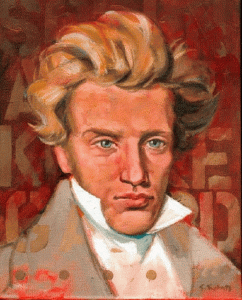
Soren Kierkegaard
For the existentialist philosophers like Pascal, Kierkegaard, Heidegger and Sartre, thought or rationality was a form of sleep, in the terminology of the Russian esoteric teacher Gurdjieff, particularly, Montaigne’s way of desultory, meandering, digressive thinking, Gurdjieff called it as ‘wool gathering’ and associative thinking, not even right concentrate thinking. For them ‘angst’ or anguish, fear and trembling caused by the thought of death was the basic unit of life or meaningful existence. Starting from this angst, everyone goes on his own way to combat and win over it. Perhaps one can call Montaigne also an existentialist for his preoccupation with death.
By the way, being a student of Montaigne for more than five decades, I should follow the way of my French mentor and am duty bound to narrate how my course of life changed due to a near-death experience.
I was a serious student of Gurdjieff. I was waging war against sleep. Even our wakeful state was questioned by him and called it as a veiled form of sleep. Sleep hangs in the brows and mind has day dreams. The conquest of sleep by constantly remembering oneself that one is asleep and imprisoned by 48 laws of nature upon earth. (Vallalar says that the number of prisons is 96) I was practicing ‘the work’ of G as we fondly called him. But, he also slept for some 3 hours everyday, according to his biographers. This deprivation of sleep and his driving of the car always on the wrong side of the road made him meet with two accidents. And the second one was nearly fatal.
One night I chanced upon listening to a verse of Ramalinga Vallalar in a temple of Siva. At that time, Siva was my favorite deity. In the verse, Vallalar had sung, ‘Sleep was permanently thrown out. The sun dawned’. Immediately, I restored not to sleep thereafter. I went home and asked my wife to prepare a flask full of strong coffee. Whenever I felt asleep, I would drink the coffee and kept vigil. And I was doing my job as a traveling salesman as usual. This war against sleep went on for 68 days. I was aged 45 and was a body builder and a yogi of Pranayama and meditations of many varieties.
On the 68th night, my heart ached. I felt drowsy. Slowly, I was losing my consciousness. Darkness, pitch darkness, total darkness. I cannot describe its degree of darkness. It engulfed me. And a power, so immense, say, some ten thousand hands were pulling me into that darkness. I knew I was dying. But I refused t submit to it. I resisted it with all my might and main. But it was more than human. I started praying to god, Lord Siva. I chanted one of his famous songs from Thevaram, ‘Oh, Golden bodied Lord!’. I prayed to him: ‘Oh Lord! Save me, Give me some more years. I have aged, bed-ridden parents and a young wife and two kids. I am the only bread-winner. So spare me my life’. Nothing availed. I was drawn into that darkness.
I don’t remember how long I remained like that. After sometime, my consciousness was awakened to my surprise and gratitude. Deep from my heart and soul, I thanked God: ‘My eternal gratefulness and indebtedness to you my Lord!’ I said silently but deeply. I turned to my prayer room to thank god. None was there. But covering the main entrance of the house, stood a body of light. I expected to see Lord Siva. Instead, I saw the light body of Ramalinga Vallalar. I had read in his biography and in many of his sacred verses his claim of having attained a body of light. Now I was blessed with a darshan of it.
Immediately, a doubt arose. That is the way of mind. Could it be a hallucination created by my own mind? The agnostic in my mind spoke. Some other thoughts also arose. Why did Vallalar appear and save me? I prayed to Lord Siva. He didn’t appear. Or could it be that Siva appeared in the form of Vallalar? Or Vallalar was sent by Siva? Or both are one? Or God had blessed Vallalar with this power of awakening souls from the dead? Only doubts remained. Nothing certain was known.
(To be continued)
